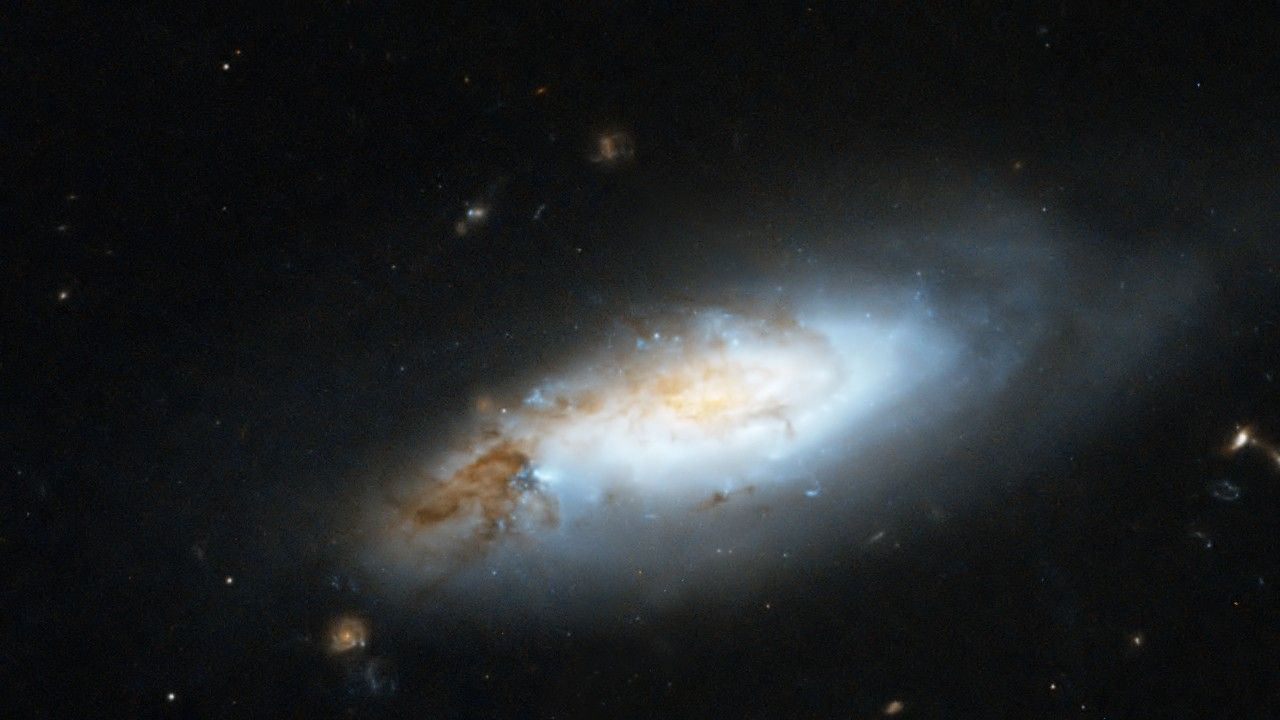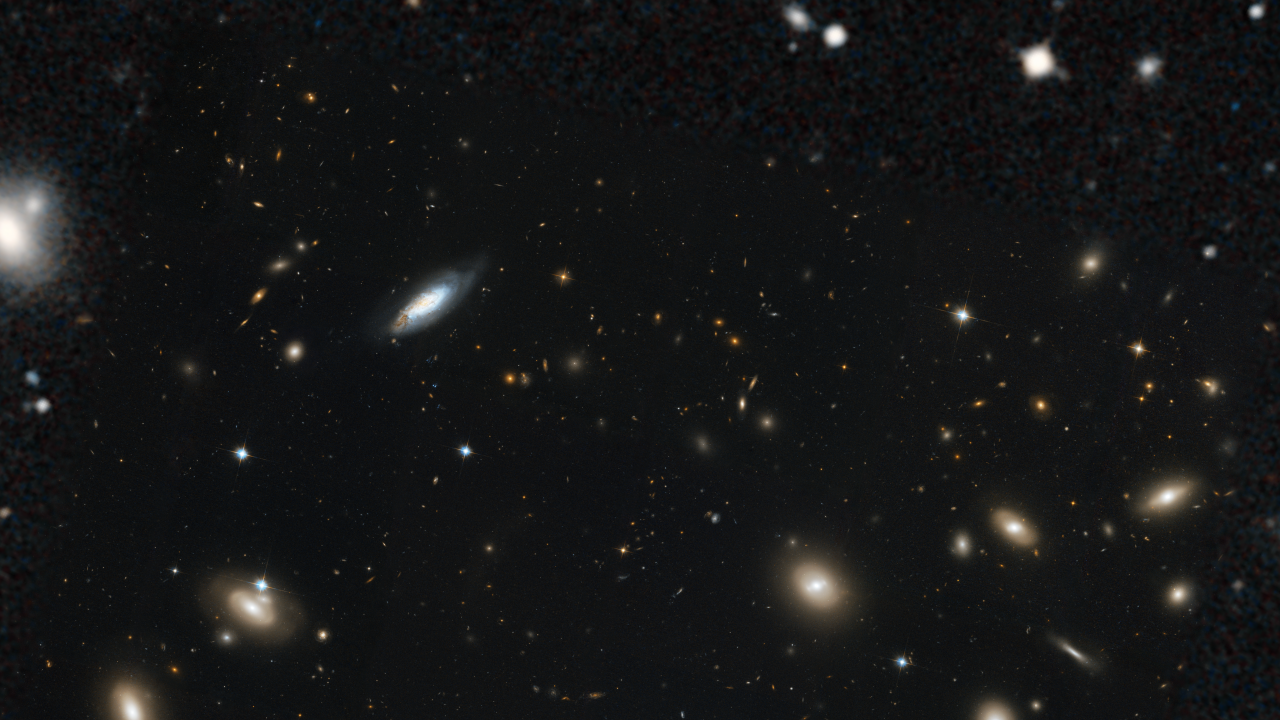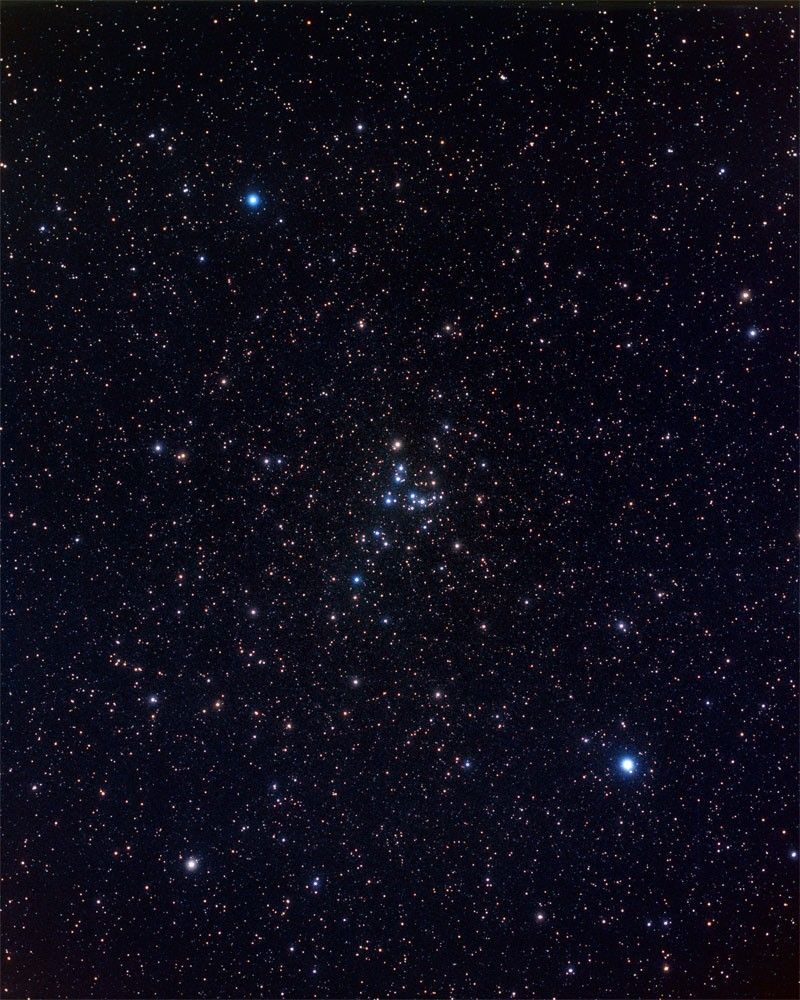1 min read
Lenticular Galaxy in the Coma Cluster with Numerous Background Galaxies, a Detail of a Larger Hubble Image

About the Object
- R.A. PositionR.A. PositionRight ascension – analogous to longitude – is one component of an object's position.12h 59m 48.72s
- Dec. PositionDec. PositionDeclination – analogous to latitude – is one component of an object's position.27° 58' 50.48"
- ConstellationConstellationOne of 88 recognized regions of the celestial sphere in which the object appears.Coma Berenices
- DistanceDistanceThe physical distance from Earth to the astronomical object. Distances within our solar system are usually measured in Astronomical Units (AU). Distances between stars are usually measured in light-years. Interstellar distances can also be measured in parsecs.300 million light-years or 90 million parsecs
About the Data
- Data DescriptionData DescriptionProposal: A description of the observations, their scientific justification, and the links to the data available in the science archive.
Science Team: The astronomers who planned the observations and analyzed the data. "PI" refers to the Principal Investigator.HST Proposal: 10861 D. Carter (Liverpool John Moores University) and collaborators. - InstrumentInstrumentThe science instrument used to produce the data.HST>ACS/WFC
- Exposure DatesExposure DatesThe date(s) that the telescope made its observations and the total exposure time.November, 2006 - January, 2007, Exposure Time: 12 hours
- FiltersFiltersThe camera filters that were used in the science observations.F475W (SDSS g), F814W (I)
- Object NameObject NameA name or catalog number that astronomers use to identify an astronomical object.Coma Cluster, Abell 1656, RB67 110
- Object DescriptionObject DescriptionThe type of astronomical object.Galaxy Cluster
- Release DateJune 10, 2008
- Science ReleaseHubble’s Sweeping View of the Coma Cluster of Galaxies
- Credit

The image is a composite of several separate exposures made by the ACS instrument on the Hubble Space Telescope. Two filters were used to sample broad wavelength ranges in the yellow and near infrared. The color results from assigning different hues (colors) to each monochromatic image. In this case, the assigned colors are: Cyan: F475W (SDSS g) Orange: F814W (I)
Related Images & Videos

Hubble's Sweeping View of the Coma Cluster of Galaxies
NASA's Hubble Space Telescope captures the magnificent starry population of the Coma Cluster of galaxies, one of the densest known galaxy collections in the universe. The Hubble's Advanced Camera for Surveys viewed a large portion of the cluster, spanning several million...

Hubble Focuses on Coma Cluster of Galaxies (Zoom and Pan)
The Coma Cluster of galaxies is one of the densest collections of galaxies in the universe. The Hubble Space Telescope's Advanced Camera for Surveys viewed a large portion of the cluster, spanning several million light-years across. This cluster contains thousands of galaxies...

Zooming into the Coma Cluster of Galaxies
The Coma Cluster of galaxies is one of the densest collections of galaxies in the universe. The Hubble Space Telescope's Advanced Camera for Surveys viewed a large portion of the cluster, spanning several million light-years across. This cluster contains thousands of galaxies...
Share
Details
Claire Andreoli
NASA’s Goddard Space Flight Center
Greenbelt, Maryland
claire.andreoli@nasa.gov
































